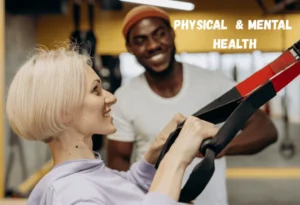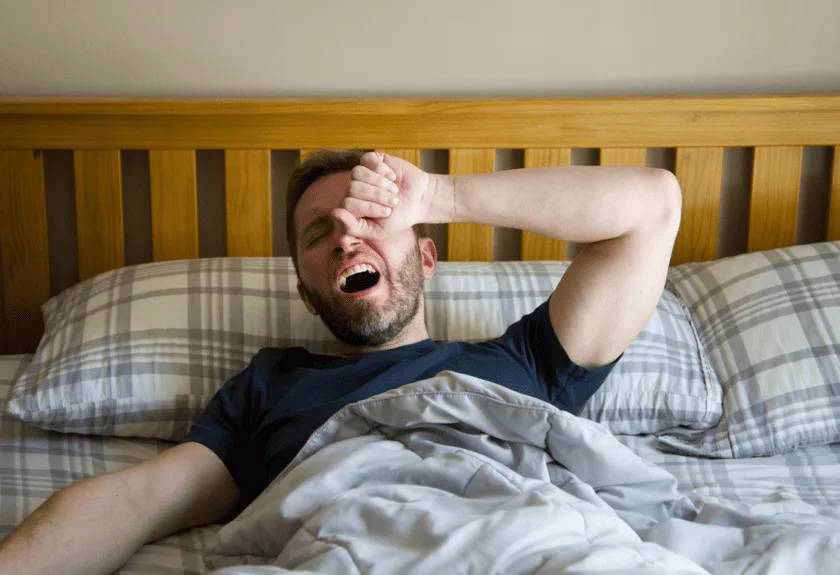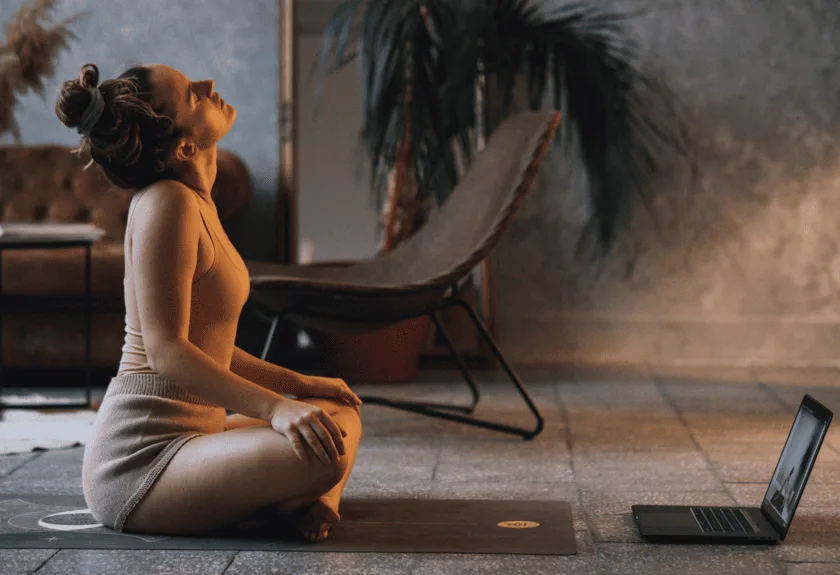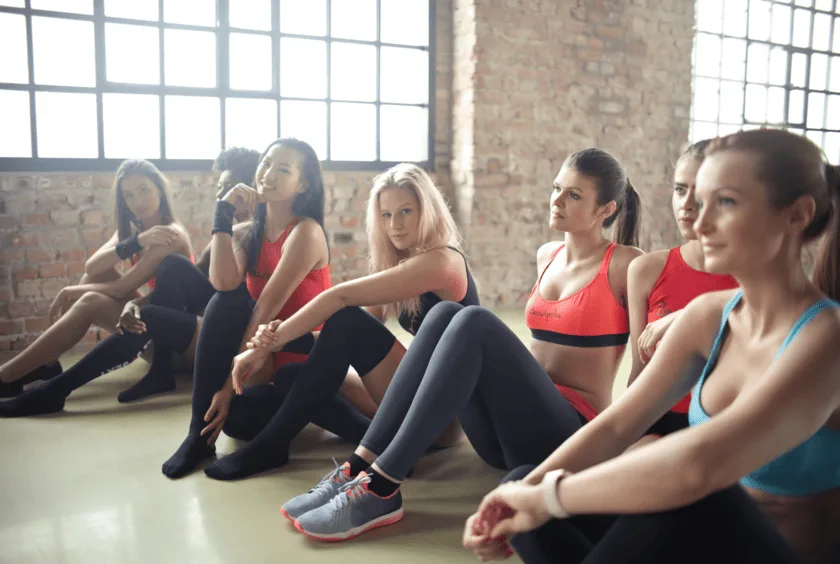Understanding Physical Activity
Definition of Physical Activity
Physical activity refers to any movement of the body that requires energy expenditure. This includes activities that engage your muscles and increase your heart rate, whether it’s structured exercise or everyday movements like walking to work or gardening. Unlike exercise, which is planned and repetitive, physical activity can be unstructured and integrated into your daily life.
Examples of Everyday Physical Activities
Physical activity doesn’t have to be complicated or time-consuming. Here are some simple examples you might already be doing:
- Walking or cycling to run errands
- Taking the stairs instead of the elevator
- Playing with children or pets
- Doing household chores like sweeping or vacuuming
- Gardening or yard work
These activities may seem small, but they add up and contribute to your overall health.
Benefits of Regular Physical Activity
Incorporating physical activity into your routine offers numerous benefits for your body, mind, and spirit. Here’s why it’s worth making it a priority:
- Improved Physical Health: Enhances cardiovascular health, strengthens muscles and bones, and helps maintain a healthy weight.
- Mental Well-being: Reduces stress, anxiety, and depression while boosting mood and energy levels.
- Increased Longevity: Lowers the risk of chronic diseases like heart disease, diabetes, and certain cancers.
- Better Sleep: Promotes deeper and more restorative sleep.
- Enhanced Productivity: Sharpens focus and improves cognitive function, making it easier to tackle daily tasks.
Remember, even small steps toward movement can make a big difference over time.
Defining Exercise
In the whirlwind of modern life, understanding what truly constitutes exercise can be surprisingly elusive. With so many fitness trends, conflicting advice, and time constraints, it’s easy to feel confused or overwhelmed. But at its core, exercise is simply any physical activity that enhances or maintains your fitness and overall health. It’s intentional, structured, and repetitive, designed to challenge your body and mind in ways that everyday movement doesn’t.

What Constitutes Exercise?
Exercise goes beyond casual physical activity like walking to the store or doing household chores. It’s a planned and purposeful effort to improve your physical capabilities. Whether it’s lifting weights, running, or practicing yoga, exercise involves setting aside time to focus on specific goals like building strength, increasing endurance, or improving flexibility. The key is consistency and intentionality—making it a regular part of your routine rather than an occasional effort.
Types of Structured Exercise Routines
There’s no one-size-fits-all approach to exercise, and that’s okay. Different routines cater to different needs and preferences. Here are some common types you can explore:
- Aerobic Exercise: Activities like running, swimming, or cycling that get your heart rate up and improve cardiovascular health.
- Strength Training: Using weights, resistance bands, or bodyweight exercises to build muscle and increase strength.
- Flexibility and Mobility Work: Practices like yoga or stretching routines that enhance your range of motion and reduce the risk of injury.
- High-Intensity Interval Training (HIIT): Short bursts of intense activity followed by rest periods, perfect for those with limited time.
- Mind-Body Exercises: Activities like Tai Chi or Pilates that focus on both physical and mental well-being.
Benefits of Intentional Exercise
The benefits of exercise extend far beyond just physical fitness. Here’s how incorporating structured exercise into your life can transform your overall well-being:
- Improved Physical Health: Boosts cardiovascular health, strengthens muscles, and helps maintain a healthy weight.
- Mental Clarity and Focus: Enhances cognitive function and reduces symptoms of anxiety and depression.
- Increased Energy Levels: Regular exercise can combat fatigue and improve your overall stamina.
- Better Sleep: Helps regulate sleep patterns, leading to more restful nights.
- Emotional Resilience: Releases endorphins, which can elevate your mood and reduce stress.
Remember, the goal isn’t perfection—it’s progress. Even small, consistent efforts can lead to significant improvements in your health and happiness.
Key Differences Between Physical Activity and Exercise
Purpose and Intentionality
Physical activity encompasses any movement that engages your muscles and burns calories. It’s often spontaneous and integrated into daily life, such as walking to the store or gardening. While it’s beneficial, it may not always have a specific health or fitness goal in mind. On the other hand, exercise is a structured, deliberate form of physical activity designed to improve fitness, strength, or endurance. It’s purposeful, with clear objectives like building muscle or enhancing cardiovascular health.
Structure and Planning
Physical activity tends to be less formal and doesn’t require much planning. It’s often driven by necessity or convenience, like taking the stairs instead of the elevator. Exercise, however, involves structured routines and often follows a plan tailored to specific fitness goals. For example, a workout regimen might include scheduled sessions of weightlifting, running, or yoga, each targeting different aspects of physical fitness.
Impact on Fitness and Health Goals
While both physical activity and exercise contribute to overall health, their impacts differ significantly. Regular physical activity can help maintain general well-being and reduce the risk of chronic diseases. However, exercise is more targeted and effective for achieving specific fitness milestones, such as losing weight, gaining muscle, or improving athletic performance. Combining the two ensures a balanced approach to health, blending everyday movement with intentional training for optimal results.
Why Both Are Essential for Well-Being
How Physical Activity Complements Exercise
Physical activity and exercise are like two sides of the same coin—each plays a unique role in keeping your body and mind balanced. While exercise is structured, intentional, and often goal-driven (like a 30-minute HIIT session or weight training), physical activity encompasses all the movement you do throughout the day, whether it’s walking to the store, gardening, or taking the stairs. Together, they create a synergy that supports cardiovascular health, muscle strength, mental clarity, and even emotional resilience.
Think of it this way: exercise builds strength and endurance, while physical activity keeps your body agile and your metabolism active. One without the other can leave gaps in your well-being. For example, someone who runs three times a week but sits for hours at a desk may still experience stiffness or low energy. On the flip side, someone who stays active with daily chores but never challenges their muscles might miss out on the deeper benefits of strength and stamina.
Balancing Both for a Holistic Approach
A truly balanced routine doesn’t force you to choose between the two—it integrates them. Here’s how to strike that harmony:
- Prioritize consistency over intensity: A 10-minute stretch or a brisk walk counts just as much as an hour at the gym when done regularly.
- Listen to your body: Some days call for a vigorous workout; others might need gentle movement like yoga or a leisurely stroll.
- Break up sedentary time: Set reminders to stand, stretch, or take short walking breaks—especially if you have a desk job.
“Well-being isn’t about perfection—it’s about showing up in ways that feel sustainable and nourishing, whether that’s a sweat session or a dance break in your living room.”
Examples of Integrating Both Into Daily Life
You don’t need a rigid schedule to make this work. Here are simple ways to blend physical activity and exercise seamlessly:
| Physical Activity | Exercise |
|---|---|
| Walking or biking to work | Adding a 15-minute bodyweight routine before breakfast |
| Playing with kids or pets | Scheduling two weekly strength-training sessions |
| Taking the stairs instead of the elevator | Joining a weekend dance or sports class for fun |
The key is to make movement a natural part of your day, not just something you “check off.” When physical activity and exercise work together, they create a foundation for energy, longevity, and joy—without burnout or guilt.
Practical Tips to Incorporate Physical Activity and Exercise
Simple Ways to Stay Active at Home or Work
Staying active doesn’t have to mean hitting the gym or running a marathon. Small, consistent movements throughout the day can make a big difference. Here are a few ideas to keep you moving, even with a busy schedule:
- Take short breaks: Set a timer to stand up, stretch, or walk around for 5 minutes every hour.
- Use your environment: Opt for stairs instead of elevators, or walk while taking phone calls.
- Turn chores into movement: Activities like vacuuming, gardening, or even organizing can count as physical activity.
- Try desk exercises: Simple stretches, seated leg lifts, or chair squats can keep you active while working.
How to Create a Flexible Exercise Routine
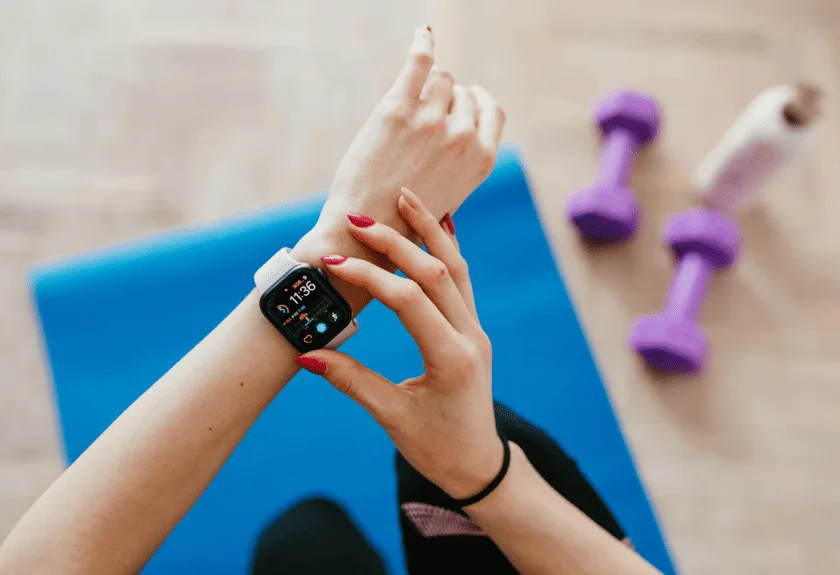
Creating a workout routine that fits your life is key to sticking with it. Here’s how to design one that’s realistic and adaptable:
- Start small: Even 10-15 minutes of exercise a day can build a habit. Gradually increase as you feel comfortable.
- Mix it up: Combine cardio, strength training, and flexibility exercises to keep things interesting and balanced.
- Schedule it: Block out time in your calendar, but allow for flexibility if life gets busy.
- Listen to your body: Rest when you need to, and adjust intensity based on how you feel.
Overcoming Common Barriers to Movement
We all face obstacles that make it harder to stay active. Here are some strategies to tackle the most common ones:
- Lack of time: Break activity into smaller chunks—10 minutes here and there add up.
- Low motivation: Focus on how movement makes you feel, rather than just the results. Pair exercise with something you enjoy, like a favorite playlist or podcast.
- Feeling exhausted: Light movement, like walking or gentle yoga, can actually boost energy levels.
- Unpredictable schedules: Have a few go-to routines that can be done anywhere, like bodyweight exercises or a quick walk.
Common Misconceptions About Physical Activity and Exercise
Debunking Myths About Needing a Gym
Many people believe that effective physical activity requires a gym membership or expensive equipment. This couldn’t be further from the truth. Exercise can happen anywhere—your living room, a park, or even during a break at work. Bodyweight exercises like push-ups, squats, or yoga can be just as effective as machines. The key is consistency, not the location or tools. Embrace the flexibility of working out at home or outdoors, and remember: progress isn’t tied to a specific setting.
Understanding That Small Efforts Count
One of the most pervasive myths is that only long, intense workouts make a difference. In reality, every bit of movement counts. A 10-minute walk, stretching during a busy day, or choosing the stairs over the elevator all contribute to your overall health. Small, consistent efforts can accumulate into significant improvements over time. Don’t underestimate the power of short bursts of activity—they’re practical, manageable, and perfectly valid.
Avoiding Burnout by Balancing Intensity
It’s easy to fall into the trap of thinking that harder and longer always equals better. However, overloading yourself with high-intensity workouts can lead to burnout or injury. Balance is essential. Mix low-intensity activities like walking or gentle yoga with more vigorous exercises when you feel ready. Listen to your body and adjust your routine to fit your energy levels and schedule. Sustainable habits are built on moderation, not extremes.
“The journey to better health doesn’t have to be overwhelming—it’s about finding what works for you and staying consistent, not perfect.”
- You don’t need a gym to stay active.
- Short bursts of movement are just as valuable.
- Balance intensity to avoid burnout and maintain sustainability.
Starting Your Journey: Small Steps, Big Impact
Embarking on a journey toward better health and well-being doesn’t require grand gestures—it thrives on small, intentional steps. Whether you’re looking to move more, eat mindfully, or cultivate inner peace, the key lies in realistic goals, celebrating progress, and building habits that last. Here’s how to begin without overwhelm.
Setting Realistic Goals
Ambition is admirable, but overly ambitious goals can lead to frustration. Instead of aiming for perfection, focus on what’s achievable within your current lifestyle. Ask yourself:
- What’s my “why”? – Connecting to a deeper purpose keeps motivation alive.
- Is this sustainable? – If a goal feels like a burden, scale it back.
- Can I break it down? – Smaller milestones make progress tangible.
For example, instead of committing to an hour of daily exercise, start with 10 minutes three times a week. Progress, not perfection, builds momentum.
Celebrating Progress, Not Perfection
Every step forward counts—even the tiny ones. Did you choose a healthy snack? Take a short walk? Pause for a deep breath? These are victories worth acknowledging. Try:
- Keeping a progress journal to reflect on small wins.
- Sharing achievements with a supportive friend or community.
- Rewarding yourself in meaningful (non-food) ways—like a relaxing bath or a new book.
“Success is the sum of small efforts, repeated day in and day out.” — Robert Collier
Building Sustainable Habits for Life
Habits are the foundation of lasting change. Instead of relying on willpower, design your environment and routine to support your goals. Here’s how:
- Start small – A 5-minute meditation or a single glass of water each morning adds up.
- Anchor habits – Pair new behaviors with existing ones (e.g., stretching after brushing your teeth).
- Be kind to yourself – Slip-ups are part of the process. Reset without self-criticism.
Remember, consistency trumps intensity. A gentle, steady approach creates lifelong change.
FAQ: Starting Small Without Losing Motivation
- How do I stay motivated when progress feels slow?
- Focus on how habits make you feel—energized, calm, proud—rather than just outcomes. Track non-scale victories like better sleep or improved mood.
- What if I miss a day (or week)?
- Setbacks are normal. Treat them as data, not failure. Ask: “What got in my way?” and adjust your plan accordingly.
- How can I make time when I’m overwhelmed?
- Micro-habits help. Even 60 seconds of deep breathing or a walk around the block counts. Small efforts compound over time.
Your journey isn’t about reaching a finish line—it’s about creating a life that feels nourishing, one step at a time. Start where you are. Trust the process. You’ve got this.
Reference:
- Caspersen, C. J., Powell, K. E., & Christenson, G. M. (1985). Physical activity, exercise, and physical fitness: definitions and distinctions for health-related research. Public Health Reports, 100(2), 126-131. https://pmc.ncbi.nlm.nih.gov/articles/PMC1424733/
- Pereira, R. E., Mourão-Carvalhal, M. I., & Fonseca, S. (2023). Horticultura como atividade promotora da saúde no idoso. Revista Internacional de Educação, Saúde e Ambiente (RIESA), 7(1), 45-58. https://riesa.mundis.pt/index.php/riesa/article/download/66/63/154
- Warburton, D. E., Nicol, C. W., & Bredin, S. S. (2006). Health benefits of physical activity: the evidence. CMAJ : Canadian Medical Association Journal, 174(6), 801-809. https://doi.org/10.1503/cmaj.051351
- Patel, H., Alkhawam, H., Madanieh, R., Shah, N., Kosmas, C. E., & Vittorio, T. J. (2017). Aerobic vs anaerobic exercise training effects on the cardiovascular system. World Journal of Cardiology, 9(2), 134-138. https://doi.org/10.4330/wjc.v9.i2.134
- Piercy, K. L., Troiano, R. P., Ballard, R. M., Carlson, S. A., Fulton, J. E., Galuska, D. A., … & Olson, R. D. (2018). The Physical Activity Guidelines for Americans. JAMA, 320(19), 2020-2028. https://doi.org/10.1001/jama.2018.14854


